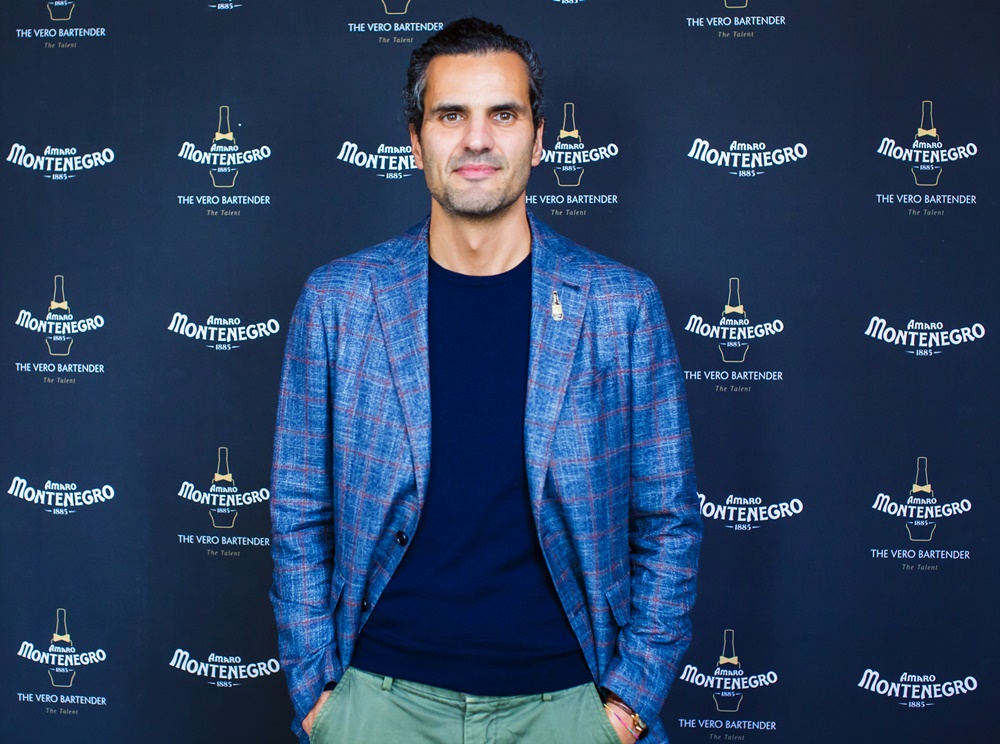[:it]Matteo Bonoli, master herbalist of Amaro Montenegro, opens the doors of bitters to us[:]

[:en]
Of ELISABETTA LUGLI
That of bitters is a fascinating and extremely varied universe and boasts a history that has its roots in antiquity. To begin our in-depth journey on this topic, we consulted Matteo Bonoli, who is a great expert on bitters and does a very particular job, which evokes ideas related to alchemy: his role is that of Master Herbalist of Amaro Montenegro, the one which holds the secrets of a thousand-year-old and complex recipe, all based on herbs.
Here's what he told us:
Matteo, tell us a little about yourself. How did you land on this role as Master Herbalist of Amaro Montenegro?
I have been in Montenegro for ten years, I started as a research and development manager. Then came the role of Master Herbalist: I not only follow Amaro Montenegro but all the group's products. I am one of the few to have the recipe for Amaro Montenegro! I have a degree in food science and technology and a PhD in food science. Before arriving in Montenegro I trained, starting in a liquor factory near Ravenna. I love my job, in fact it's as if I had never gone to work, because I enjoy it.
Let's start with a little history. When are bitters born?
To define its origin we must go back in time, to be precise to the 5th century BC, when the Greek doctor Hippocrates macerated herbs in wine, creating the Hippocratic wines which are in fact the ancestors of bitters. They were unstabilized drinks: sugars and herbs were added to block fermentation. The result was essentially a vermouth! Then, in the Middle Ages, culture became the prerogative of the friars, and the epicenter of it was the abbeys: the bitters of the time were also produced in the abbeys. Later, in the 18th century, the role of producers of alcoholic beverages prepared with herbs passed from the friars to the pharmacists. All this always with a view to drinks with beneficial, digestive and stimulating properties; real elixirs.
When did bitters as we know them nowadays appear?
In the mid-1800s, in a historical era characterized by great turmoil, after many conflicts. It is then that the cordial is born to be enjoyed after the meal.
Can you tell us the story of Amaro Montenegro?
Amaro Montenegro was created in 1885 and its recipe has remained unchanged since then. Its inventor was a young Bolognese, Stanislao Cobianchi, who preferred to travel the world to discover aromas rather than the ecclesiastical career for which he was destined. For 11 years the bitter was called Elixir di Lungavita, and then changed its name to Amaro Montenegro in honor of Princess Elena of Montenegro, later wife of Vittorio Emanuele III.
Tell us how amaro is produced!
Amaro Montenegro contains 40 different aromatic herbs, which are processed in the Teramo extraction plant, in a natural way as in the founder's time. From these we obtain six notes. Then there is the seventh note, the most secret, produced with 5 herbs. This note is prepared in the San Lazzaro factory, and the final blending takes place in Bologna. The seventh note is called "premium" and is the most important and powerful: only one liter is used every 15,000. It may seem like a drop in the ocean, but it is the one that makes the difference.
Let's talk about Amaro Montenegro and mixology.
Until 5 or 6 years ago nobody talked about mixology with bitters: the idea came from America, where Amaro Montenegro is highly appreciated and they have a lot of curiosity about this type of product. An example: Sother Teague, a bartender from New York, founded Amor y Amargo, where he serves only bitters-based cocktails, and is a big fan of Montenegro. Following in its wake, mixology with amaro has also arrived here. To spread it, the company has created an annual tour, The Vero Bartender, made up of masterclasses and competitions between renowned professionals who offer their Montenegro-based mixology.
What cocktails are made with Amaro Montenegro?
There are Twist on Classics, like Monte Mule, or Montenegroni. Or again, Monte Sour. A fabulous and surprising combination is that of the M&M: Montenegro and Mezcal in the form of shots. Aromas reminiscent of cocoa emerge.
Can you leave us a recipe?
I leave you the one of Monte Mule, which is perfect for the summer season.
Here she is:
4 cl Amaro Montenegro
6 cl Ginger Beer
3 cl lime juice
[:]
